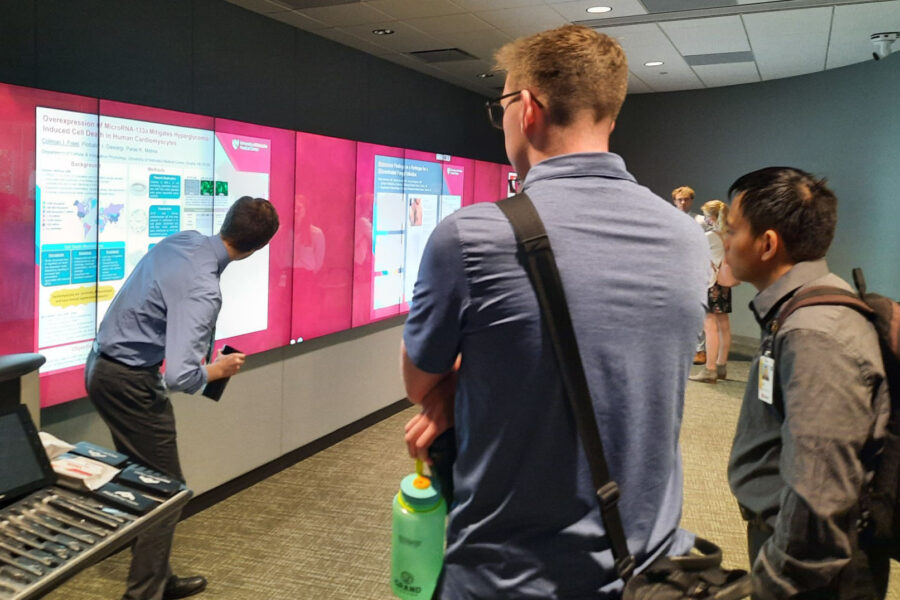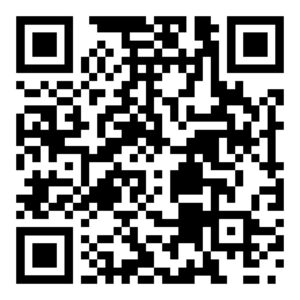Not so long ago, a poster presentation required exactly that: a poster. One made of paper, printed out, put up, carried from place to place, hopefully without incurring major damages.
Kelly Caverzagie, MD, associate dean for educational strategy and learning environment for the UNMC College of Medicine, recalls having to travel through an airport, then get on a plane, while trying to awkwardly carry a stubborn, intractable tube.
But Thursday’s 2023 Medical Student Research Showcase heralded the dawn of a new day. It showcased not just the research itself, but the Davis Global Center as a world-class facility as it provided a digital canvas to display the work. This year’s MSRS was its first as an all-digital poster presentation and believed to be the second ever at UNMC. (The Department of Neurological Sciences held its annual resident research poster event digitally in April.)
Science everywhere, but not a piece of paper in sight.
The showcase took over the Davis Global Center’s first floor, using an array of screens to display what iEXCEL calls “e-posters.” College of medicine students presented their research to an audience that included the latest incoming class of their medical school peers.
That was by design, said Dr. Caverzagie, faculty organizer of the showcase, along with Kari Nelson, PhD, director of undergraduate medical education research.
“We have specifically chosen to conduct it on this day, so that our incoming medical students, who are in the middle of their week of orientation, can see themselves and meet some near peers who have conducted research or done some other scholarly activity,” Dr. Caverzagie said.
And it worked: “Several students have asked me already, ‘How do I get involved with research?’” Dr. Caverzagie said.
“It’s exciting to see some of the newer students in here interacting with some of the older medical students,” said Paul Dye, manager, educational technology and design, for iEXCEL. “And it’s exciting to get them here into the Davis Global Center, so they can see what is available to them.”
Dye said e-posters were uploaded via OneDrive. No tube required.
That was fine with M4 Morgan Karloff, who drew a crowd for his presentation on scurvy by invoking (what else?) pirates.
“I think it’s nice,” Karloff said. “You don’t have to carry a poster around, find a way to get it printed. It’s not all curled up.”
“We use technology instead of creating waste with paper,” Dye said.
And Dr. Caverzagie said he thought the digital presentation was better received than paper posterboard might have been: “There’s just a little bit more energy, a warmer feeling,” he said.
One student researcher who couldn’t be there still made her presentation, through an animated video embedded in her e-poster.
It is another instance of the medical center’s use of new educational models and technological advances, including those related to iEXCEL and other innovative educational methods/curricula.
Is this the wave of the future? Well, maybe more for individual presentations than full poster sessions. Dye said it would be difficult for most to recreate on this scale.
Not many facilities have as many big screens as are available at the Davis Global Center.
But we are headed that way. Karloff, the M4, has heard horror stories, although he’s never ripped a poster or wrestled with a tube. This is all he knows. His very first poster is an e-poster.
“It is,” he said.

